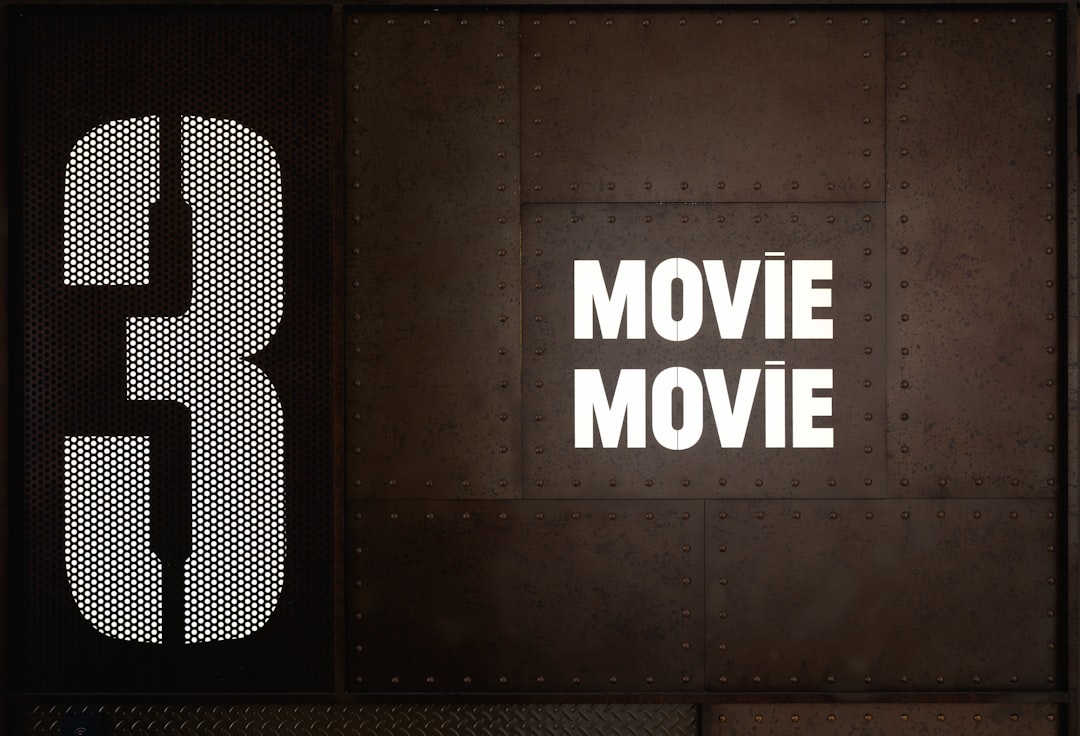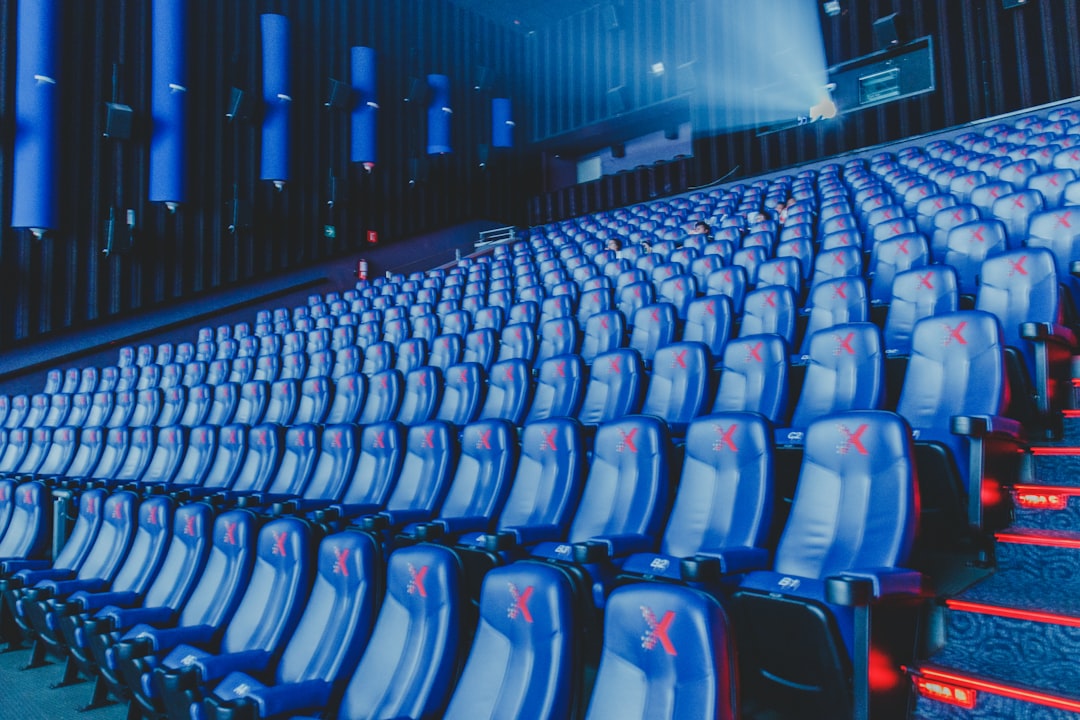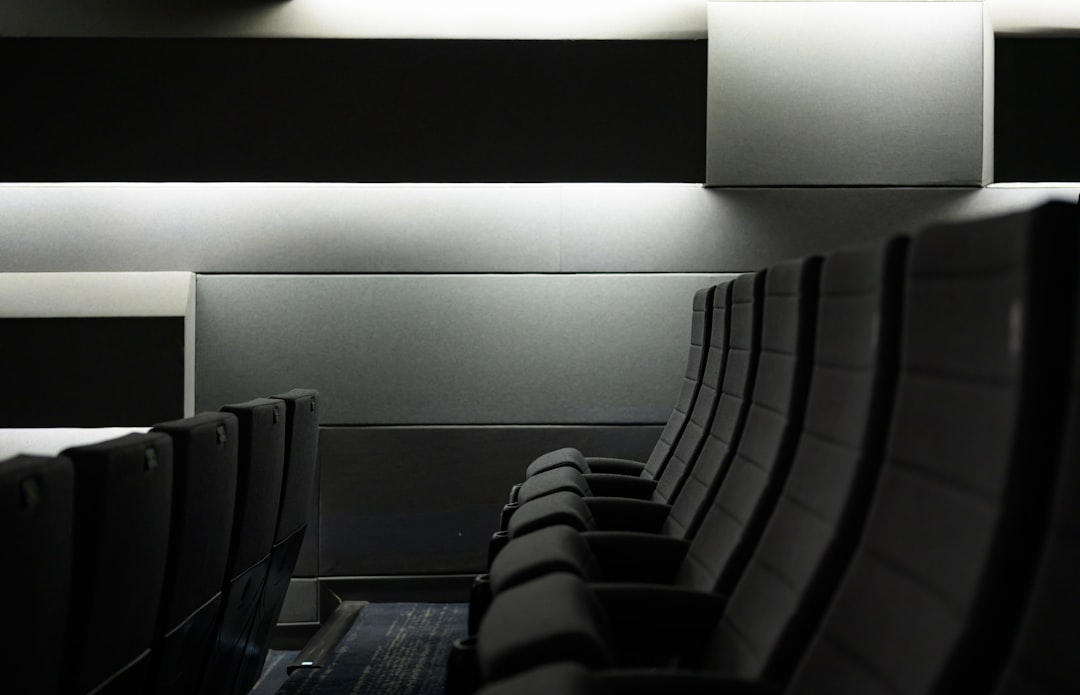

Engage prospects with a scan and streamline customer engagement with FREE QR code marketing tools by Sona – no strings attached!
Create a Free QR CodeFree consultation

No commitment

Engage prospects with a scan and streamline customer engagement with FREE QR code marketing tools by Sona – no strings attached!
Create a Free QR CodeFree consultation

No commitment
Movie theater advertising services are evolving as growth marketers and media buyers address persistent challenges such as measuring cinema ad ROI, bridging offline-to-online data gaps, guided by Sona offline attribution, and driving ongoing audience engagement. Traditional cinema ads, from static slides to pre-movie trailers, still fall short in truly understanding audience attention. The result is missed data collection and lost chances for timely follow-up when interest is at its peak.
A prominent pain point is that high-value prospects often go untracked due to the lack of concrete engagement signals. This inability to identify which moviegoers are interacting with on-site assets like posters, displays, or on-screen promos results in missed leads and fewer opportunities for targeted offers that could increase visit frequency and spend.
QR codes present a practical solution. For inspiration, see cinema QR ideas. By embedding scannable experiences throughout screens, lobbies, seatbacks, and tickets, marketers can directly capture audience intent in the moment. Each scan provides a clearer view of the in-theater audience, transforming every physical marketing touchpoint into a digital opportunity for retargeting and personalized engagement. This guide demonstrates how QR-powered strategies resolve longstanding pitfalls, turn anonymous traffic into actionable insights, and drive higher conversion rates for movie theater advertising services.

Cinema marketers face the challenge of turning audience interest into real engagement, yet valuable intent often goes uncaptured through analog processes like paper surveys, promo tear-sheets, and stand-alone posters. When prospective buyers view a trailer promo or admire a lobby standee but have no instant way to act, the moment passes and attribution breaks. For industry examples, see cinema marketing. Unconverted demo interest or prospects engaging without submitting contact forms translates to missed opportunities for both brands and theaters.
Modern strategies replace static posters and handouts with dynamic QR codes that prompt real-time action. By aligning QR experiences with clear offers and streamlined mobile flows, theaters can increase engagement, build first-party data, and tie offline attention to measurable outcomes. Start by mapping your primary goals, then place relevant QR journeys where attention is highest.

Visibility into engagement is a core issue for movie theater advertisers. Without direct signals, key marketing moments go unrecorded, budgets are spent on broad messaging, and promising prospects remain anonymous. As hybrid entertainment habits evolve, theaters need a reliable way to capture action in the physical venue and connect it to digital conversions.
QR codes bridge this gap by creating a frictionless path from offline interest to online action. Moviegoers do not need to install an app to redeem offers, enter contests, or view content. A single scan can record a high-intent moment, activate a relevant journey, and subsequently attribute conversions like ticket sales, concession redemptions, or loyalty registrations. For use cases, see cinema QR use cases.
A moviegoer’s scan triggered by a trailer or concession offer can now be traced to ticket purchases, future retargeting audiences, and loyalty enrollment. This unlocks insights that were previously hidden inside anonymous traffic.
Movie theaters need fresh, actionable audience data to keep marketing relevant and efficient. Outdated analytics lead to limited personalization, generic offers, and a slower path to loyalty. QR codes give you the flexibility to choose the right interaction model based on your goal and context.
By tailoring QR code formats to the use case and environment, cinemas can provide delightful experiences while gathering measurable signals. The right format reduces friction, raises scan rates, and increases the odds that a single scan turns into a repeatable relationship.
Dynamic QR code management lets marketers adjust destinations, enrich metadata, and respond to performance in real time. If a film sells out or a promotion changes, update the experience instantly and preserve your attribution with the Sona QR platform.

Growth opportunities in cinema marketing are strongest when physical assets become interactive and data-enriched. Theaters are full of high-attention moments and dwell time. Each can become a capture point that nurtures intent and feeds your performance marketing stack.
Prioritize placements that match the moviegoer’s mindset. Early in the visit, target awareness and incentives. During the film window or immediately after, target feedback and loyalty. Outside the venue, focus on awareness and community building that draws people back.
These placements turn generic website tracking into identification of high-fit prospects. You gain the ability to nurture audiences based on specific in-theater actions instead of broad demographic assumptions.

Theater brands often miss valuable signals when interactions are not captured at key touchpoints. The ripple effects include lower satisfaction scores, incomplete feedback, and underpowered loyalty programs. QR codes transform these pain points into measurable value drivers.
By pairing strong calls to action with meaningful, mobile-native experiences, QR-led campaigns can increase basket size, raise visit frequency, and improve sentiment. The key is to make the reward clear and the process effortless.
Some cinema chains now use these flows to track individual engagement signals, enrich profiles with genre preferences and visit patterns, and surface high-potential leads for premium formats or special events.
Missing out on high-intent audiences is common when in-theater engagement remains anonymous. With QR codes, you can turn discrete, real-world actions into structured signals that power segmentation and retargeting. This closes the loop between physical presence and digital performance.
Start by defining the audiences you care about most, such as frequent visitors, premium format buyers, families, students, or fans of a specific genre. Then assign unique QR codes to capture the traits that differentiate them. Every scan becomes a label you can use to deliver more relevant offers later. For deeper segmentation strategy, explore Sona intent data.
Segmentation ensures each scan, click, or entry is tied to measurable outcomes. With a platform like Sona QR, you can automate audience creation, connect scans to campaigns, and maintain a feedback loop that improves with every show.
Siloed data and inconsistent experiences are common when bridging print, social, and digital campaigns. QR journeys solve this by creating a consistent, low-friction entry point across channels. With centralized management, you can orchestrate journeys that respond to timing, location, and content preferences.
Moviegoers expect cohesion between what they see on-screen and what they receive in their inboxes or feeds. Integrating QR scans with your multi-channel plan ensures that each engagement triggers timely, relevant follow-ups that shorten the path to purchase.
A centralized platform such as Sona QR helps you manage all your codes, monitor performance by channel and placement, and sync data with your CRM and ad platforms. This makes QR codes the offline onramp to your entire digital engine.
Select one primary objective per campaign to maintain a clean message. A focused offer outperforms a cluttered landing page with multiple competing actions. If you need to test several objectives, use unique codes for each and split placements accordingly.
If you anticipate rotating offers during a film’s run, dynamic codes eliminate reprinting costs. Pair each code with a short, human-readable URL as a backup for people who prefer to type.
Test with multiple devices, angles, and lighting conditions that reflect real environments like dim theaters or bright lobby screens. Validate that the destination loads quickly on mobile and requires minimal taps to complete the desired action.
Ensure staff can answer questions and prompt scanning during peak periods. Even a simple script like Ask me about today’s QR rewards can significantly lift engagement.
Incorrect campaign setup causes low performance due to poor visibility, weak offers, or misattribution. Validate placement sightlines, lighting, and foot traffic flow before going live. If you see low scan rates, adjust size or location and refine the CTA to clarify the value exchange.
Consistent process addresses fragmented data, engagement bottlenecks, and the gap between campaign launch and lead conversion. Document your naming conventions, UTM strategy, and CRM sync rules. Standardize your testing cadence so each film cycle becomes a learning loop that raises ROI.
Feed learnings back into your media plan and partner conversations. Share insights with studios and local sponsors to negotiate better placements or co-op funding based on proven performance.
Linking in-theater activity to revenue is a persistent challenge for cinema marketers. High interest in promos or pre-roll contests often remains unconverted when scan events do not flow into CRM and attribution tools. With modern analytics, you can move beyond simple scan counts to connect each engagement with measurable business outcomes.
Build a measurement plan that covers the full journey: scan, destination engagement, conversion, and subsequent behaviors like repeat visits or higher basket value. Use unique codes for each placement and campaign version, then apply UTMs and metadata to align with your reporting framework.
Platforms like Sona QR and Sona can centralize scan data, attribute revenue to the right placements, and link offline engagement with digital touchpoints across the buyer journey. The result is clear insight into which QR experiences generate pipeline and repeat visits.
Scaling QR performance requires more than code placement. Marketers must ensure visibility, remove friction, and design post-scan journeys that keep the momentum alive. Treat every scan as the beginning of a conversation, not the end.
Establish operating norms across theaters so execution remains consistent. Shared templates for creative, CTAs, and landing pages will lower production time and raise quality, especially when films rotate quickly.
A creative example: run a QR trivia contest tied to the film universe that awards digital collectibles or bonus points. Another idea: place QR codes on printed tickets or parking validation slips to encourage post-show feedback and future visit planning.

Persistent challenges surrounding ROI measurement and audience building are solvable with QR-enabled campaigns that tie offline attention to digital action. The following examples illustrate how theaters and studios are turning fleeting interactions into measurable lift.
What they have in common is a clear promise, a short path to value, and strong attribution. Each example uses dynamic codes to pivot offers on the fly, test creative variations, and segment audiences by interest and behavior. For broader industry context, explore Sona QR’s entertainment strategies.
These strategies demonstrate that dynamic QR campaigns deliver stronger attribution and fewer missed opportunities compared to static assets. Better still, they compound over time as data enriches profiles and informs more precise targeting.
Experienced cinema marketers know that small execution details often determine campaign success. Strong lighting, clear CTAs, and fast-loading mobile pages can triple conversion rates compared to poorly implemented experiences. Conversely, minor friction like glare, shadows, or long forms can suppress engagement.
Build a checklist culture and test ruthlessly before, during, and after launch. Carry a device kit and scan codes from multiple angles and distances. Watch a few live interactions to observe where confusion or friction occurs, then fix it immediately.
**Tips:**
**Pitfalls:**
Avoiding these pitfalls leads to higher campaign performance and credible ROI proof. Pair this with a strong optimization rhythm, and your QR efforts will keep compounding.
Movie theater marketers have long struggled to convert fleeting physical interactions into actionable digital signals. QR-powered campaigns now connect lobby interest, on-screen excitement, and multi-channel marketing in real time. By capturing in-theater intent and integrating it into nurture and upsell streams, brands can move beyond legacy limitations and redefine attribution, engagement, and retention.
As movie theater advertising grows more competitive, services that prioritize actionable engagement data are best positioned for sustainable success. QR codes empower marketers to bridge the gap between physical presence and digital insight, transforming every theater interaction into a measurable, remarketable opportunity. Adopting a QR-first approach ensures high-value audiences are never lost, builds richer profiles with every visit, and delivers reliable ROI across the ever-evolving entertainment landscape. Start creating QR codes for free.
QR codes have transformed movie theater advertising services from passive promotions into interactive, measurable conversion drivers. Whether it’s attracting new moviegoers, enhancing in-theater engagement, or delivering personalized offers, QR codes streamline the customer journey and capture critical data to optimize every campaign. Imagine knowing exactly which posters, trailers, or concession stand ads prompt ticket purchases and concession sales—and being able to act on that insight instantly.
With Sona QR, you can create dynamic, trackable QR codes in seconds, update your campaigns on the fly without costly reprints, and directly link every scan to revenue. This empowers your theater advertising to be smarter, more agile, and far more effective at converting interest into ticket sales and repeat visits. Start for free with Sona QR today and turn every scan into an opportunity to grow your audience and boost your bottom line.
QR codes can be embedded on screens, lobby standees, seatbacks, tickets, and concession areas to create interactive experiences that capture audience intent and enable real-time engagement.
Integrating QR codes allows marketers to track real-time engagement, collect first-party data, personalize offers, increase conversion rates, and bridge offline interest with online actions.
QR codes provide granular tracking by linking scans to specific placements, creatives, and times, enabling closed-loop attribution from in-theater engagement to ticket sales, concession redemptions, and loyalty registrations.
QR codes can link to exclusive trailers, concession discounts, feedback forms, mobile sweepstakes, app downloads, social engagement campaigns, and personalized landing pages.
By enabling immediate, device-agnostic actions without app installs, QR codes capture high-intent moments and convert anonymous visitors into identifiable leads for targeted follow-up and retargeting.
Use Sona QR's trackable codes to improve customer acquisition and engagement today.
Create Your FREE Trackable QR Code in SecondsJoin results-focused teams combining Sona Platform automation with advanced Google Ads strategies to scale lead generation

Connect your existing CRM

Free Account Enrichment

No setup fees
No commitment required

Free consultation

Get a custom Google Ads roadmap for your business






Launch campaigns that generate qualified leads in 30 days or less.
